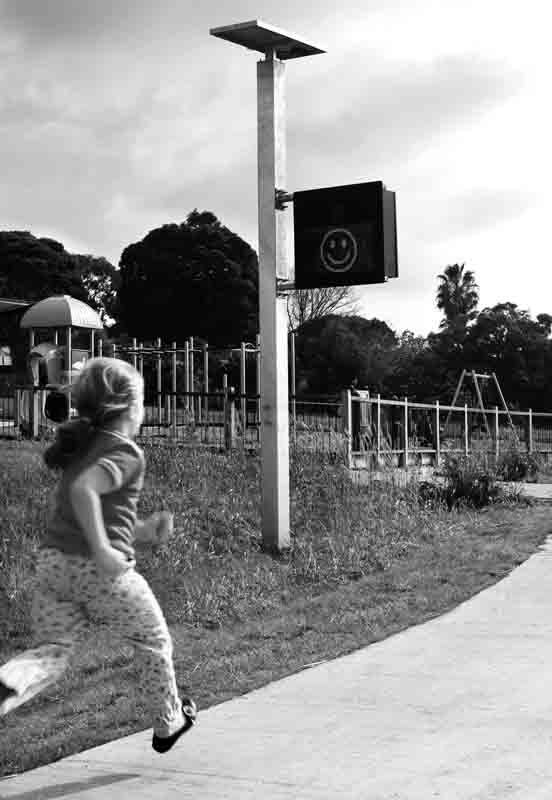A key historical connection exists between Cambodia and Australia: “We are both touched or scarred by colonialism.” So says Clare McCracken, an emerging artist from Down Under whose own work is driven by the manifest damage to local communities. Scars evince past hardship while carrying its memory into the present.
There’s nothing funny about scars, but McCracken has a unique way of dealing with them: she turns to humour. Speed Check is a permanent installation in Noble Park in Victoria, and the piece’s working materials will be exhibited in New Artefacts, the first group show at Sa Sa Bassac Gallery. Passers-by have their speed of walking, running, cycling ‘checked’ by the speed camera, encouraging various antics and races between people who happen across it.
It may seem like fun and games, but McCracken is keen to point out the serious intent. “Almost all of [my public] works have been created with, and for, communities that have experienced some type of trauma. Yes, they are encouraging them to interact and react to their public space, but this is only because they are not connecting with it.” A large-scale toll road now runs through the Noble Park suburb. When it was being developed, the local council turned to McCracken for help in re-engaging people with their public spaces – and with each other.
McCracken’s public works certainly break the mundanity of the walk to work. They interrupt the everyday; sometimes making people laugh, sometimes think. Concept for a Boer War Memorial exemplifies the artist’s awareness of communal scars and her belief in the cathartic power of remembering. It is tempting to view such sombre works as distinct from the more playful installations, such as Speed Check, but McCracken is quick to rectify the mistake. “I think all my works are a type of monument.” Her art, whether drawing, installation or funny hat (she recently made a ‘sloth hat’), is meant to induce reflection on an event. More generally true of monuments (and subsequently her work), they are meant to be seen.
The same can be said for McCracken’s working materials, which she perceives as of equal importance as the end point. “I think I find the process important because it demystifies the outcome. It’s really important, to me, that my work is current and relevant. A transparent process allows people to follow your thoughts, which helps people ask you important questions about your practice, which in turn helps you to continue to think critically about your work and develop it.”
Not only is her work meant to be seen, it is meant to be understood. “People make a city great.” One could imagine her arguing that people make art great, too: she values Nelson’s desire to show only working materials because she wants people to be with her every step of the way.
Even work the artist defines as ‘private’ are public monuments: offerings to the world, even when they are not seen in parks or by road-sides. They are also invitations to take part in something. The demystifying effect of seeing working materials might be local only to McCracken’s art, but that effect is a valid one, which an audience might find particularly engaging in an exhibition which promises to be complex in its variety of artist backgrounds and media.
WHO: Clare McCracken
WHAT: New Artefacts exhibition
WHERE: Sa Sa Bassac Gallery, #18 2nd Floor, Sothearos Blvd.
WHEN: August 9
WHY: The process demystifies the outcome
